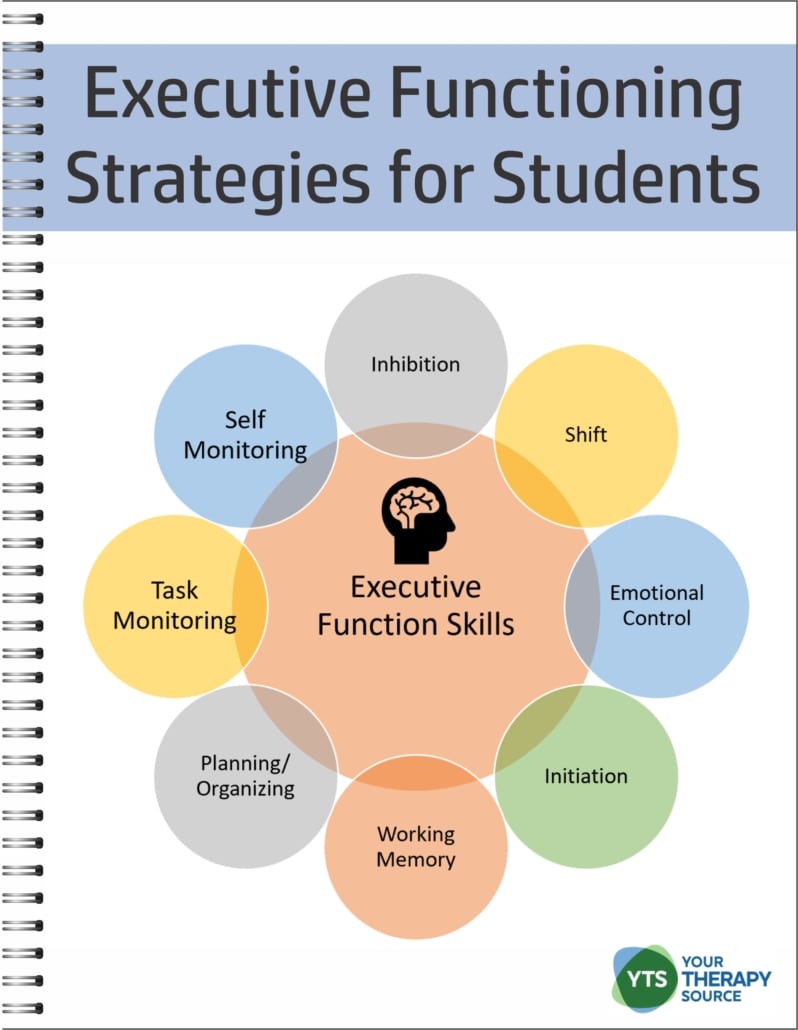Poor Executive Function Skills? Try Using Chaining

Do you work with clients who struggle with working memory, focus, organizational skills, planning, impulse control or shifting from one task to another? This may be a sign of poor executive function skills. It can be very difficult to manage the day to day tasks or learn new skills when executive function disorder is present.
Have you ever tried using forward chaining when you are teaching new skills? Perhaps you utilize backward chaining or total task chaining? Or maybe it all sounds confusing?
If you use task analysis, then you most likely use forward chaining. This method of teaching new skills helps to put the task analysis into action.
What is forward chaining?
When clients have difficulty achieving a goal or poor executive function skills, frequently the goal is broken down into smaller steps to work on each part at a time. When using forward chaining, the client completes the first step, a reinforcer is provided and the adult completes the remaining steps.
On the next attempt, the client completes the first two steps, receives reinforcer, and adult completes the remaining steps.
This is repeated until the client can complete all the steps and achieve the goal.
Example of Using Forward Chaining in School
Many times students with executive function deficits can struggle with completing large projects. This approach can help make the task more manageable. Here is an example of using forward chaining in occupational therapy or with any school staff at school.
Student needs to independently transition from the classroom to lunch. Task analysis indicates getting the lunch box from the backpack is the first step and starting to eat lunch is the final step. Student can complete step one (getting the lunch box from the backpack) and receives a reinforcer. An adult or peer assists or prompts for the steps such as line up with class, walk in hallway, locate lunch table, sit and lunch table, and open lunch. On day two, the student will get the lunch box and line up with the class and then receive a reinforcer. Assistance continues. Day three student gets lunch box, lines up, walk in hallway and then receives a reinforcer. This continues until the student is independent with the entire task.
What is Backward Chaining?
With backward chaining, the process is reversed. The adult or peer provides assistance throughout several steps until the client can complete the last steps independently. Once the last step is completed by the client the reinforcer is provided.
Example of Using Backward Chaining in School
The goal is for the student to independently bring homework home to complete. Task analysis indicates that the first step is to write down each assignment and the last step is to pack up the backpack with the correct books, notes, etc to complete the homework. The student must bring the homework home but can not complete all the steps. The student would complete the last step of actually packing the backpack but throughout the day the adult or peer would provide prompts or support to complete each earlier step.
What is Total Task Chaining?
The client completes all steps with prompts and reinforcers for each step. This is used when the client can complete parts of every step but needs some assistance and encouragement along the way to achieve the goal.
Example of Using Total Task Chaining in School
The goal is for the student to independently organize and complete a large school project. Task analysis indicates that the first step is to choose a topic and the final step is to turn in the complete project. The student has the skills to complete parts of every step of the task analysis with teacher prompts. After each step is completed with the prompts, the student receives the reinforcer until the entire project is complete.
When to Use Forward Chaining, Backward Chaining or Total Task Chaining to Help with Poor Executive Function Skills
When clients or students present with poor executive function skills, using chaining to achieve new skills can be very helpful. Choosing forward, backward or total task chaining is based on each individual client or students abilities and the skills being taught.
Chaining helps students to organize materials, plan for each step, and receive prompts when necessary to complete academic tasks and functional skills at school.
Need More Information on How to Help Students Poor Executive Function Skills?
Do you work with students who struggle with working memory, organization, impulse control, and focus? Are you searching for executive functioning strategies to help your students succeed?
The Executive Functioning Strategies for Students digital workbook is a step by step guide to help boost your student’s working memory, impulse control, focus, emotional control, organization, planning, and self-monitoring!
Reference:
Gist, C. (2019). From Frazzled to Focused: Supporting Students With Executive Function Deficits. TEACHING Exceptional Children, 51(5), 372-381.





